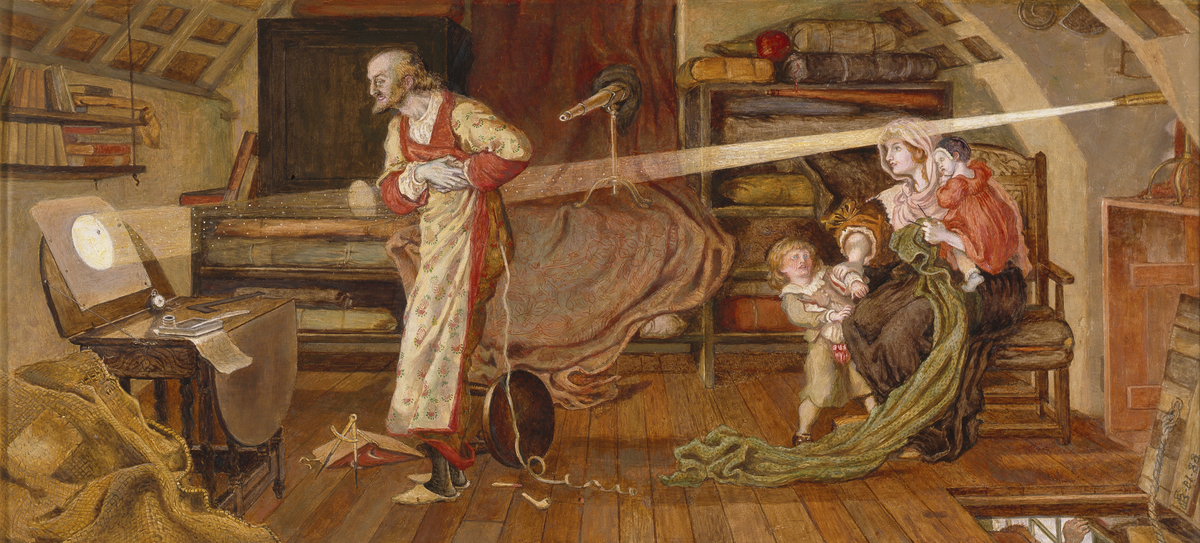Crabtree Watching the Transit of Venus, 1639
Summary
Reduced version of mural painting depicting the astronomical observation of Venus passing across the sun by a draper called Crabtree. The figure is shown in an attic above his shop. He stands to the left, looking up in amazement; his pipe, stool and astronomical equipment lie on the floor, as a shaft of light from his telescope throws a reflection of the planet onto paper propped up on a table on far left. His wife sits on chair behind him on the right, holding one of her children by the arm; a second child rests against its mother's left arm as she holds knitting in her left hand. In the background, another telescope stands on a large chest covered with drapery in the centre of the room. In the bottom right corner another person is visible through an open trapdoor, ascending a ladder.
Display Label
130 Design for Crabtree watching the transit of Venus A.D.1639 1881, 1888 Tempera on panel William Crabtree gazes at the shadow of Venus crossing the sun, projected through a telescope across a darkened attic. The transit was predicted by the astronomer Jeremiah Horrox, and corroborated by his friend Crabtree’s observation. The subject represents scientific achievement. It probably also appealed to Brown because Crabtree, from Broughton, Salford, was not a learned man like Horrox. He was a draper, and Brown shows him dressed in a silk robe dropping his notebook and compasses in excitement. This is Brown’s original design for the mural, later finished off for sale. Manchester City Galleries
Object Name
Crabtree Watching the Transit of Venus, 1639
Creators Name
Date Created
1881-1888
Dimensions
unframed: 26.4cm x 55.9cm
framed: 48.5cm x 79cm
accession number
1947.87
Place of creation
Manchester
Support
panel
Medium
tempera
Credit
George Beatson Blair bequest, 1941.
Legal
© Manchester Art Gallery

